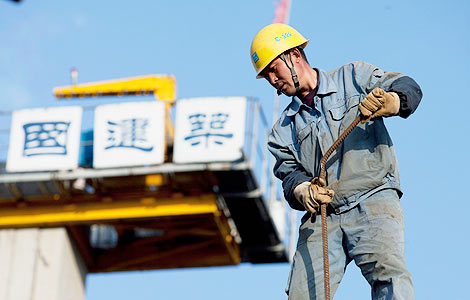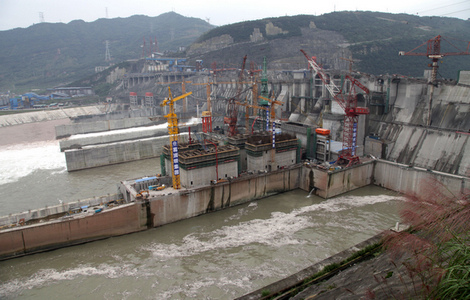Modernization is the goal
Updated: 2013-02-26 08:06
By He Xuefeng (China Daily)
|
||||||||
China's new leadership has stressed the importance of urbanization for the nation's modernization.
But urbanization on its own does not equate to modernization. Even if more people from rural areas become residents in cities they will not enjoy a dignified life there without stable jobs. Instead they will simply create dual urban-rural structures in the cities eventually.
Although urbanization in some Latin American countries is as high as 80 percent, they are still developing countries, mainly because of their urban-rural city structures characterized by slums.
Urbanization that produces slums only causes problems for cities. Urbanization in developed countries is also around 80 percent, but they have solved the dual structure problem.
On the other hand, in some South Asian countries, such as India, although urbanization is only around 30 percent, the cities still have slums. Clearly it is not enough to simply pursue urbanization, modernization is the key to development.
Modernized developed countries have realized high quality urbanization, while developing countries, no matter whether they have a high or low percentage of the population living in rural areas, have low-income groups with unstable employment living in cities. These will sooner or later create slums. So the development process cannot simply be increasing the urban population, it must be increasing modernization.
China is a developing country with low urbanization and no large-scale slums, thanks to its social structure, which provides migrant workers with the possibility of returning to their rural hometowns. Counting everyone that had lived in a city for at least half a year, China's urban population passed 50 percent in 2011. However, if we only count the population with an urban hukou, or household registration, the urban population is only 35 percent. Therefore, in reality, urbanization in China is actually far lower than the world average of 52 percent. To be more specific, China's figure is not only less than half the average of developed countries, which is 80 percent, it is also less than the average of developing countries at a similar development stage, which is 60 percent.
However, the low urbanization ratio is not a bad thing since no obvious dual structure has appeared in China's cities. There are no large-scale slums. At present, if migrant workers cannot maintain their lives in cities, they have the choice of returning to their hometowns.
In fact, in East China for example, the incomes and quality of life of some farmers are better than those of migrant workers.
Industrial development is the key to high quality urbanization otherwise slums will be inevitable. Since reform and opening-up, China has become the world factory and "made-in-China" products have provided the country with its fundamental guarantee for development. Its advantages were a cheap and high-quality labor force and its land system. However, with its rapid economic growth, wages have increased a lot, so the advantages of made-in-China have gradually weakened. It is now urgent to upgrade China's industries with more high-tech products, so both high-value "created-in-China" products and low-value made-in-China products can support industrial development and maintain the momentum of modernization.
Since China has the world's largest population, its urbanization will be unprecedented. So it will be a test both for China and the world. We should find an urbanization path with Chinese characteristics. While rapidly realizing urbanization, China should be aware of the relationship between people and the land during the process, and deal with the different interests of urban residents, farmers who have lost their land in the urbanization process, migrant workers and residents in rural areas.
It is also necessary to consider agriculture together with urbanization. For instance, it is important to take into account the current generational division of labor, whereby the older generation do the farm work in rural areas, while the younger generation migrate to cities to work.
China's urbanization is a complex and large-scale project that requires a great deal of attention in order to choose most suitable strategies for future development.
The author is a researcher on rural studies at Huazhong University of Science and Technology.
(China Daily 02/26/2013 page9)











